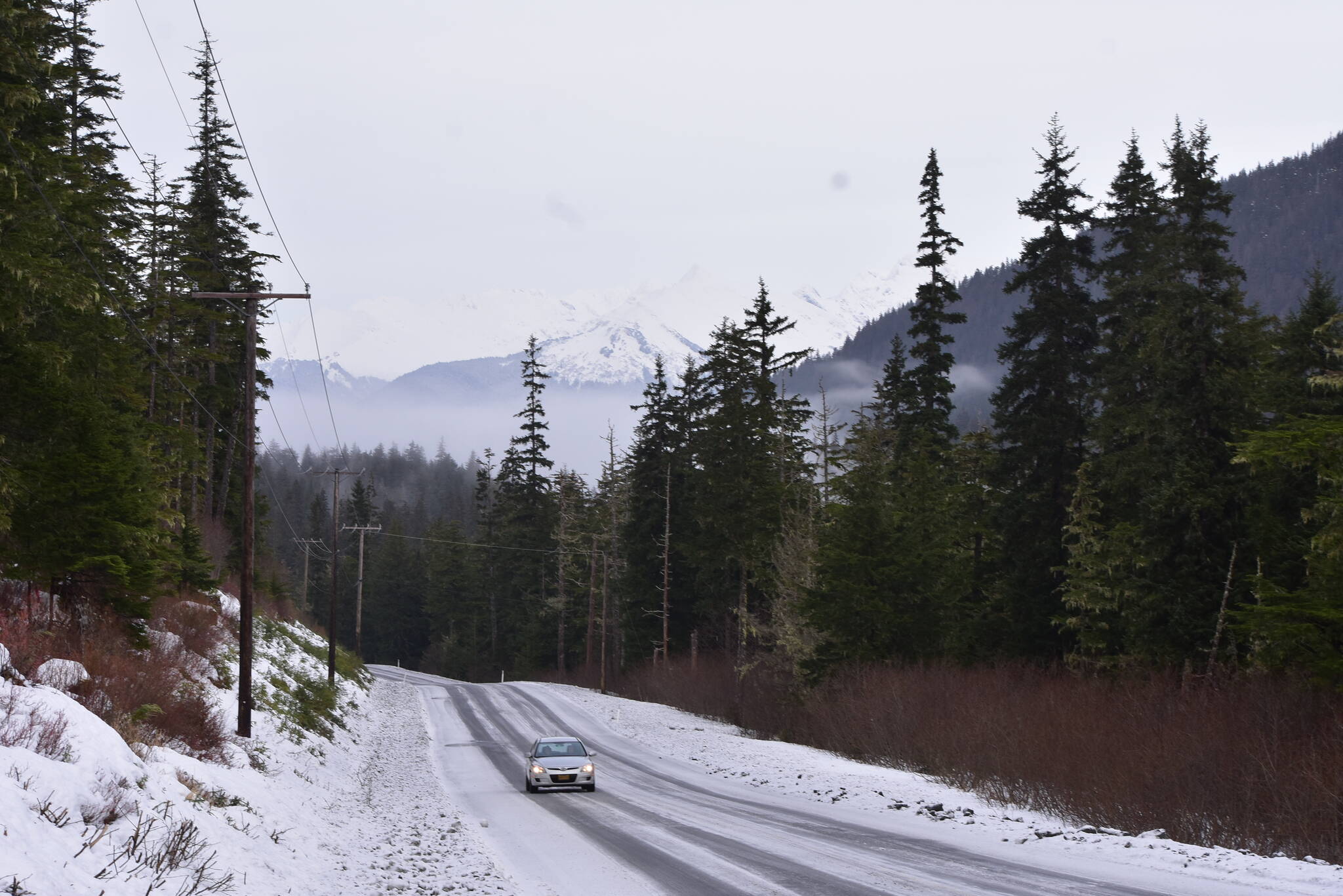For Theresa Hicks and her husband Stephen Walters, harvesting their own Christmas tree from the Tongass National Forest was an experience they’ll carry with them no matter where they currently reside.
“The experience was very enjoyable,” Hicks said. “It felt unique and special, and it provided us with a connection to our new home state. If we return to Juneau once my husband retires, we’d absolutely harvest our Christmas tree again. I may opt for a species other than a spruce because those needles hurt when trying to string lights.”
Hicks and Walters now reside in Washington, D.C., but said they cherish the memories they had of being able to wander into the wilderness in waist high snow in search of the perfect tree.
“We were at bear mile marker 38. I remember we went out the road and found people who work for the Forest Service,” Hicks said. “They directed us to where we could harvest our tree by giving us a map. They then showed us three types of trees available for harvest. I remember us being dissuaded from one type with soft needles because it was a very slow growing tree and highly encouraged to harvest a spruce.”
As many Alaskans are searching for a tree of their own this holiday season, the U.S. Forest Service sent out its yearly news release to help remind folks that while there is no permit required, there are still some important rules to follow.
According to the Forest Service, trees may be harvested from the more undeveloped areas of Tongass National Forest. Juneau Ranger district suggests looking along Glacier Highway between mileposts 29 and 33 or off of Fish Creek Road leading to the Eagle Crest Ski Area, a mile past the Fish Creek Bridge. Just as Hicks said she was dissuaded from selecting slow-growing trees, the Forest Service states trees should not be harvested from muskeg areas as regeneration in these areas is very difficult to establish.
Additionally, households may remove one Christmas tree per year and there are no regulations on what tree species to cut, but they should be no larger than seven inches in diameter at the stump. Also, trees may not be cut from land within 330 feet of a bald eagle nest (often located near water) or within 100 feet of a salmon stream or a road.
The Forest Service also advises that trees be cut as close to the ground as possible and topping larger trees is discouraged, as well. Trees may not be cut and then discarded for another, more desirable one, and trees cannot be sold, bartered or used in any commercial-type exchange for goods.
Forest Service Recreation Lead Pete Schneider said that while many of the rules remain the same from year to year, it’s always good to revisit them to avoid making any unintended mistakes.
“When you get to Cowee Creek, which is just a half mile short of the end of the road in Echo Cove, the Juneau Ranger District would like to remind people that no trees are to be cut from Héen Latinee Experimental Forest north of Juneau,” Schneider said. “Also avoid cutting from the recreation sites within the Juneau Ranger District, such as Auke Village, Lena Beach and all of the Mendenhall Glacier Recreation Area, Skater’s Cabin, Visitor Center, West Glacier Trail, Mendenhall Lake Campground and Dredge Lakes area, according to the Forest Service.”
Schneider also said handsaws must be used on Admiralty Island National Monument, and chainsaws or other motorized equipment are prohibited in the Kootznoowoo Wilderness as per usual.
A motor vehicle use map is available at the Forest Service website, fs.usda.gov, to confirm land ownership. The Forest Service also asks to keep your vehicles on the roads.
More information can be found at the Forest Service website, or by contacting the local ranger station. The Juneau Ranger District can be reached at (907) 586-8800.
• Contact reporter Jonson Kuhn at jonson.kuhn@juneauempire.com.

